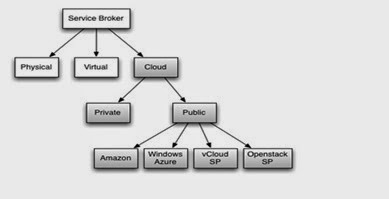Lets start by looking at what the definition of Hybrid Cloud is. This article from searchcloudcomputing certainly sums up most peoples view.
A hybrid cloud is a composition of at least one private cloud and at least one public cloud. A hybrid cloud is typically offered in one of two ways: a vendor has a private cloud and forms a partnership with a public cloud provider, or a public cloud provider forms a partnership with a vendor that provides private cloud platforms.
A good way of describing Hybrid cloud is explained here from hostingnews.com
In some situations, the customer may need both a local server running specific applications and a cloud service that host’s additional applications, files, or databases. In such a situation, the two are often configured for interoperability.
Ultimately a hybrid cloud is not made up of just two separate environments, with isolated from each other, the two environments have connectivity with each via the use of a VPN.
Another way of looking at Hybrid Cloud is providing a mechanism that sits above all the different technologies that can manage and deploy to these entities. A service broker is a nice term that has been used in the past. A consumer comes along, requests the deployment of the workload, and it is deployed on the best platform or technology suited to that workload, as shown in the diagram below.

So why are customers looking at deploying Hybrid Clouds and what are the key business drivers?
· Reduced Total Cost of Ownership (TCO)
· Lower Capital Expenditure (CAPEX) when trying new markets
· Business Agility
· It provides a clear use case for public cloud computing
· Using a hybrid cloud model is a valuable approach to architecture
· Ability to mix and match resources between infrastructure availability
· Solve resource constraint headaches by scaling out to the cloud
· Innovation and new product development
· Accelerating release cycles and speed to market
A hybrid cloud is a composition of at least one private cloud and at least one public cloud. A hybrid cloud is typically offered in one of two ways: a vendor has a private cloud and forms a partnership with a public cloud provider, or a public cloud provider forms a partnership with a vendor that provides private cloud platforms.
A good way of describing Hybrid cloud is explained here from hostingnews.com
In some situations, the customer may need both a local server running specific applications and a cloud service that host’s additional applications, files, or databases. In such a situation, the two are often configured for interoperability.
Ultimately a hybrid cloud is not made up of just two separate environments, with isolated from each other, the two environments have connectivity with each via the use of a VPN.
Another way of looking at Hybrid Cloud is providing a mechanism that sits above all the different technologies that can manage and deploy to these entities. A service broker is a nice term that has been used in the past. A consumer comes along, requests the deployment of the workload, and it is deployed on the best platform or technology suited to that workload, as shown in the diagram below.

So why are customers looking at deploying Hybrid Clouds and what are the key business drivers?
· Reduced Total Cost of Ownership (TCO)
· Lower Capital Expenditure (CAPEX) when trying new markets
· Business Agility
· It provides a clear use case for public cloud computing
· Using a hybrid cloud model is a valuable approach to architecture
· Ability to mix and match resources between infrastructure availability
· Solve resource constraint headaches by scaling out to the cloud
· Innovation and new product development
· Accelerating release cycles and speed to market
o Faster Application deployment
o Prolong legacy applications

